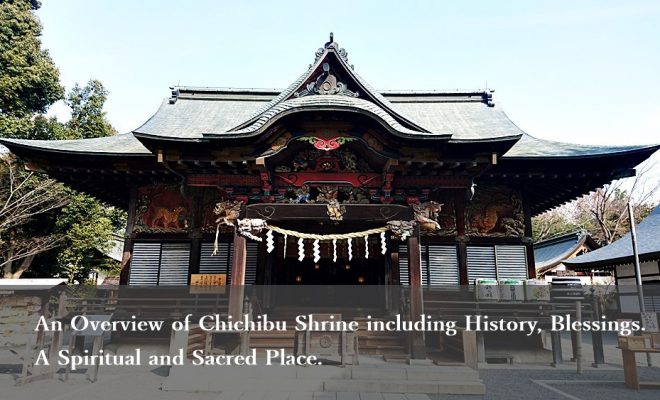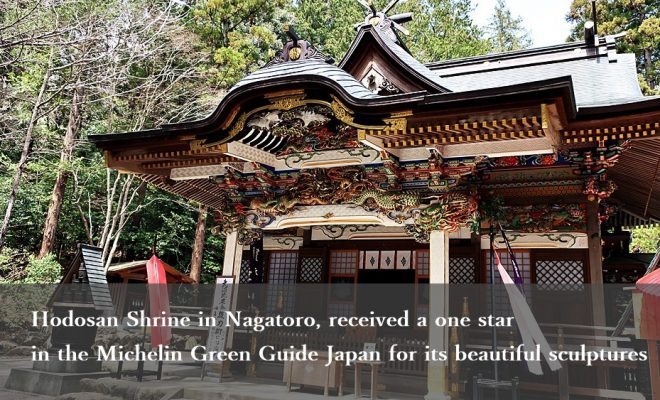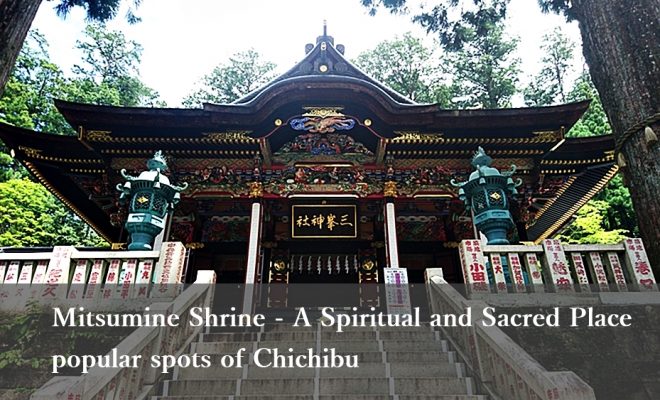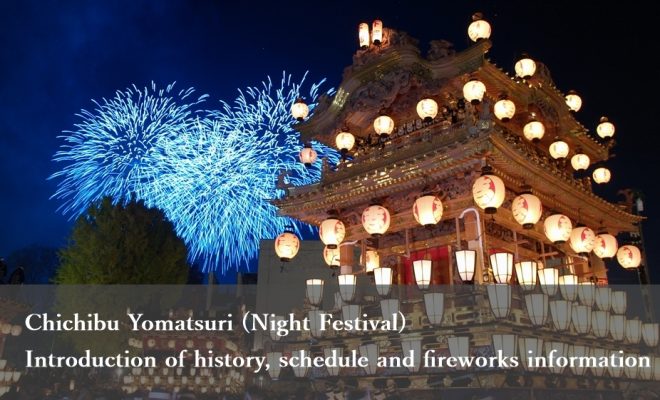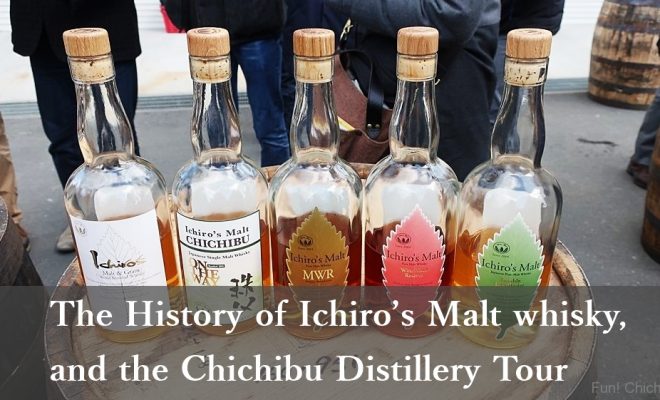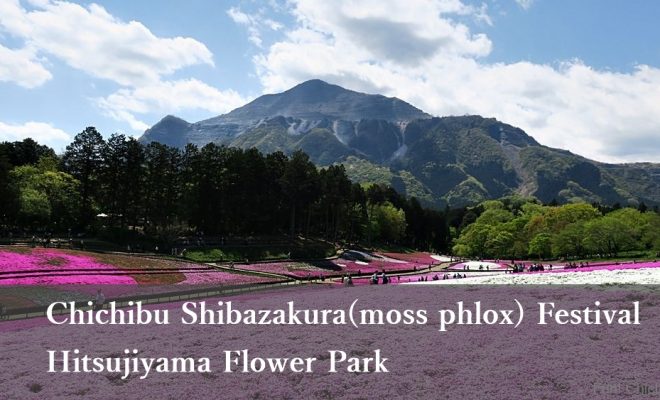Although Mitsumine Shrine is known as a great spiritual and sacred place in Chichibu City, Saitama Prefecture, Chichibu Shrine located in the city center is also known as spiritual and scared place.
Despite the urban location of Chichibu Shrine, very different from mountain-situated Mitsumine Shrine, it is very quiet and has a calming effect on visitors.
Chichibu Shrine’s events include the famous Chichibu Night Festival(Yomatsuri).
This article gives an overview of Chichibu Shrine including its history and blessings.
About the History and Blessings of Chichibu Shrine
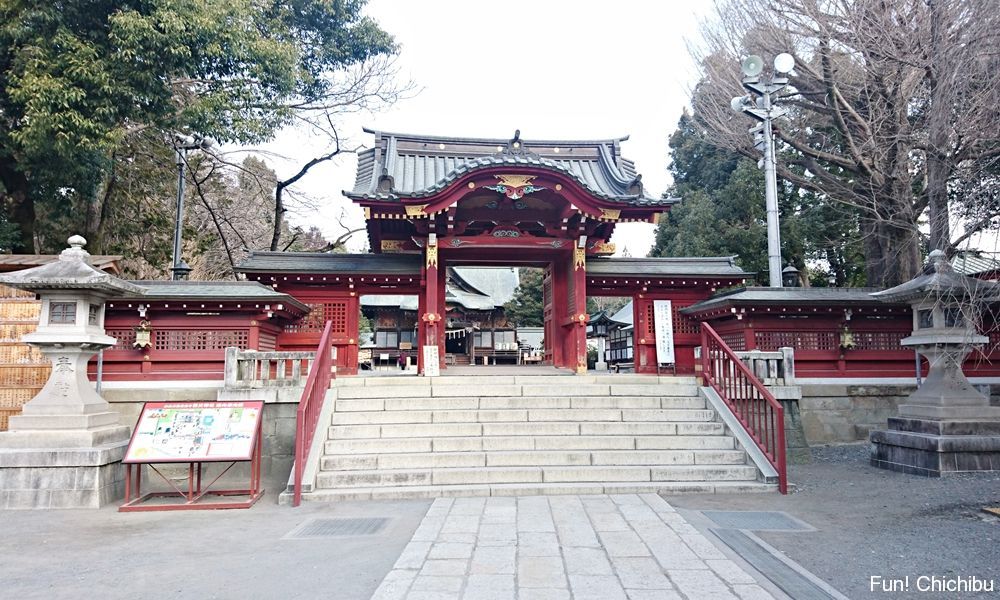
The Origin of Chichibu Shrine
Chichibu Shrine, one of the three famous shrines in Chichibu together with Hodosan Shrine and Mitsumine Shrine, is also known as a great spiritual and sacred place in Kanto area.
Chichibuhiko-no-Mikoto founded Chichibu Shrine when he enshrined Yagokoroomoikane-no-Mikoto for ancestor worship. The Shrine is an historical souchinju (the central place to pray for local Shinto-gods) in the Chichibu region and in 2014 the shrine had been established for 2100 years.
The Chichibu Night Festival, held in December, is the most important festival for the shrine.
It is said that the festival is to worship Mt. Buko, which used to be called Takeyama, which is far from the Shrine.
The Chichibu region, which is the source of Arakawa River, was regarded as an important place of water resources in the Edo period. Therefore, in 1592, Ieyasu Tokugawa ordered the construction of the main Chichibu Shrine to protect Chichibu – a place of important water resources.
The shrine has been repaired several times, most recently after the Shrine suffered typhoon damage in 1966 when 4 year repair work was subsequently undertaken.
The architectural style is Gongen-zukuri, which features colorful and gorgeous carvings. The Shrine is registered as an important cultural property in Saitama Prefecture.

The carving works of Jingoro Hidari are a must-see sight at Chichibu Shrine. He worked actively in the early Edo period and his works include Nikko Toshogu Shrine and Izumo Taisha (Great Shrine).
When visiting, please look up and around the shrine to find those colorful carvings.
Blessings of Chichibu Shrine
There are following blessings
- Academic Achievement
- Success in Examinations
- Good Fortune
- Family Safety
- Prosperity for Descendants
Since the main enshrined god is Yagokoroomoikane-no-Mikoto, a god of wisdom, many visitors come to pray for success in entrance exams during the examination season.
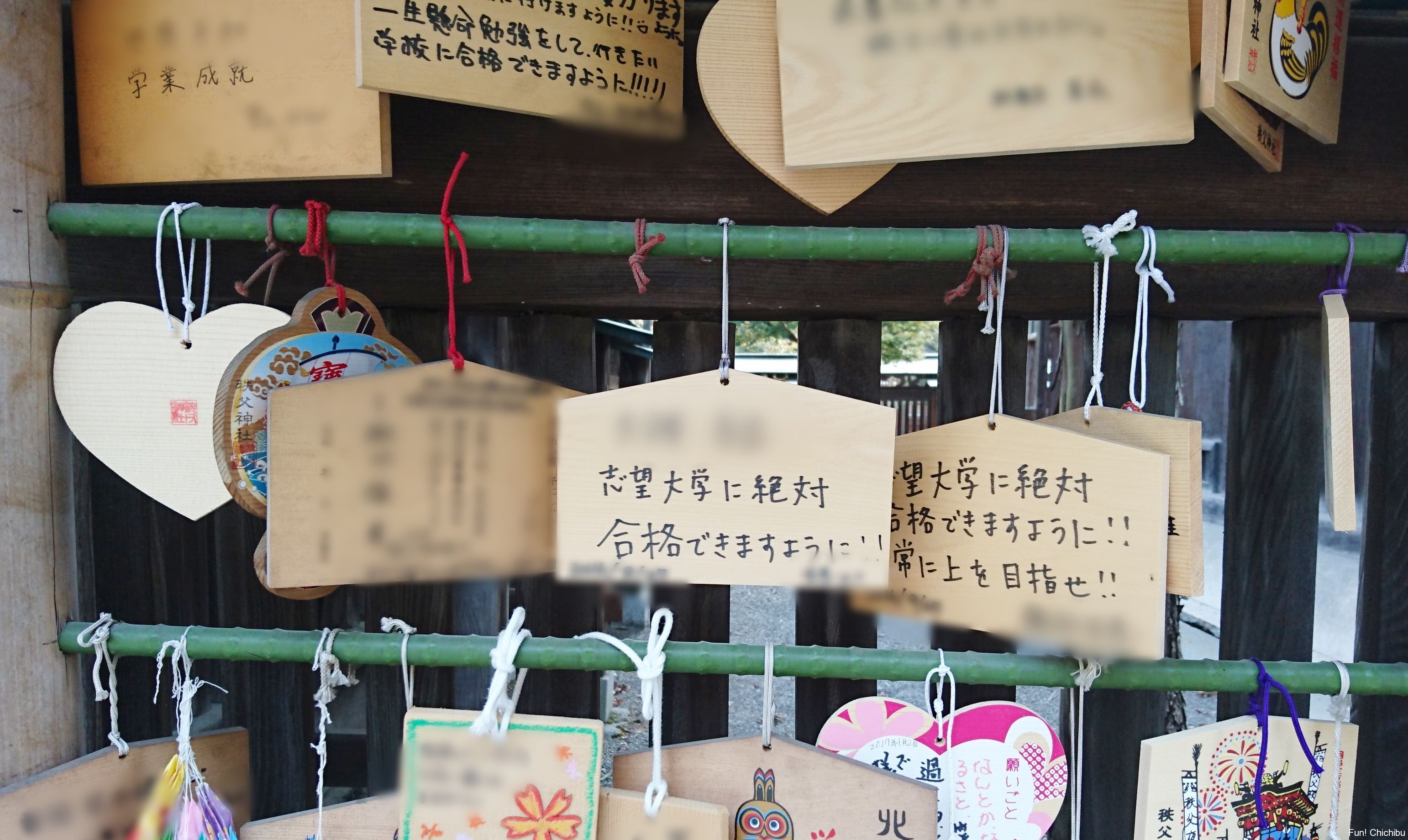
I was given charms from Chichibu Shrine when I took my high school and university entrance exams. I passed the exams and entered my preferred schools thanks to the blessings of the Shrine.
Chichibu Shrine Carving Highlights
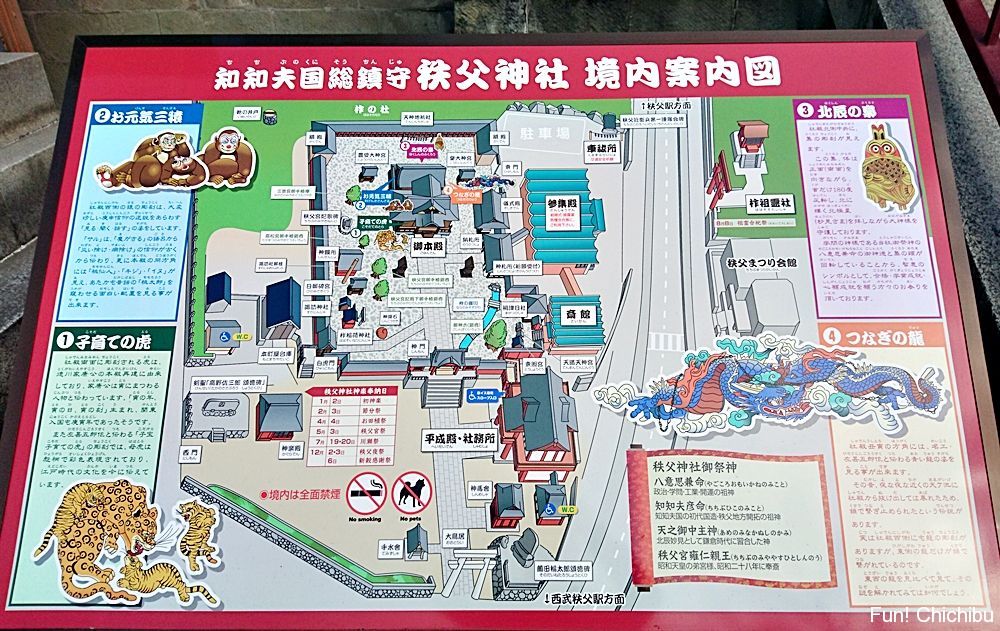
The architectural style of Chichibu Shrine is Gongen-zukuri and its colorful and gorgeous carvings are one of the must-see sights.
This article will introduce the famous carvings – including the work of Jingoro Hidari who is famous for carving the sleeping cat and three monkeys at Nikko Toshogu.
Parenting Tiger
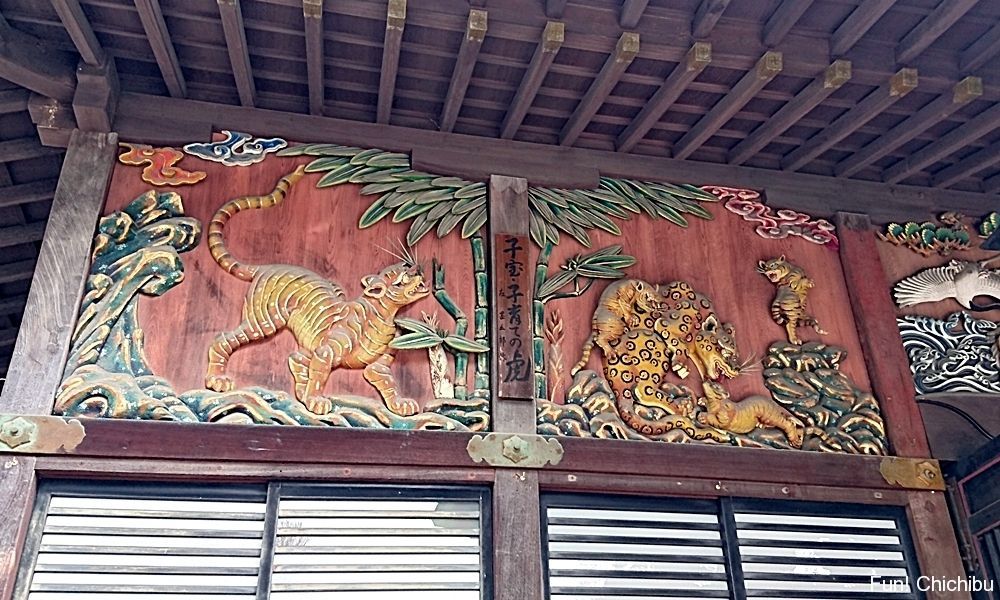
It is said that ‘Treasure Child with Parenting Tiger’ carving is Jingoro Hidari’s work. It can be found on the front-left side of the Chichibu Shrine building
Anecdotally, the reason for the carving being located on the front of the Shrine is because Ieyasu Tokugawa, who was born in the year of Tiger, valued the Chichibu Shrine legend called ‘Tiger’s Senpo (Confession).
The small tiger on the right side of carving is a child and to its left is its mother. It is reasoned that the mother tiger looks like a leopard because Jingoro Hidari wanted to express the importance of raising children.
The tiger on the far left is probably the father.
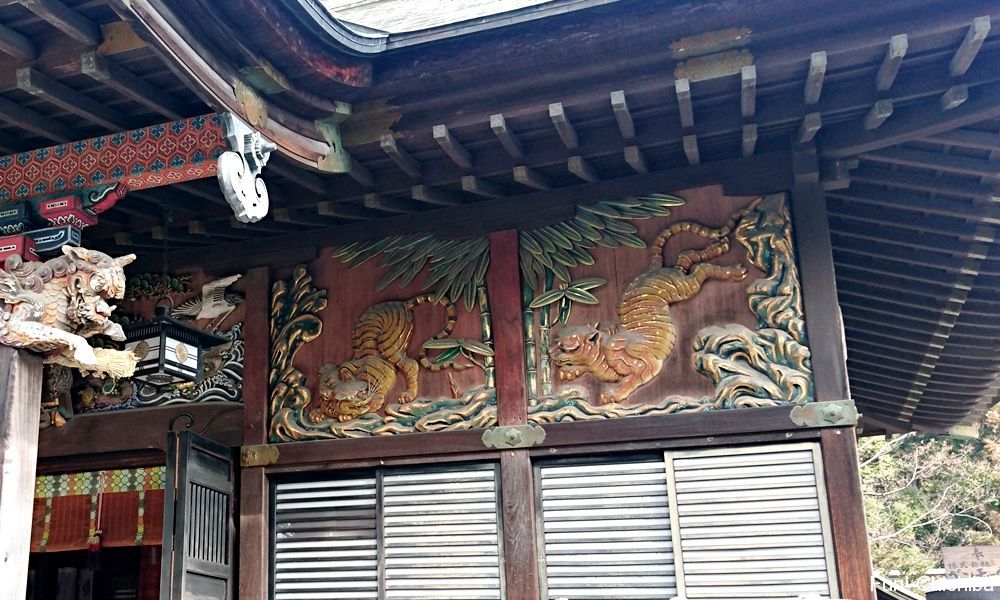
There is another tiger carving, which is unnamed, on the right-side of the Shrine building.
The tigers on both sides of the front of Chichibu Shrine enhance the magnificence.
Cheerful Three Monkeys
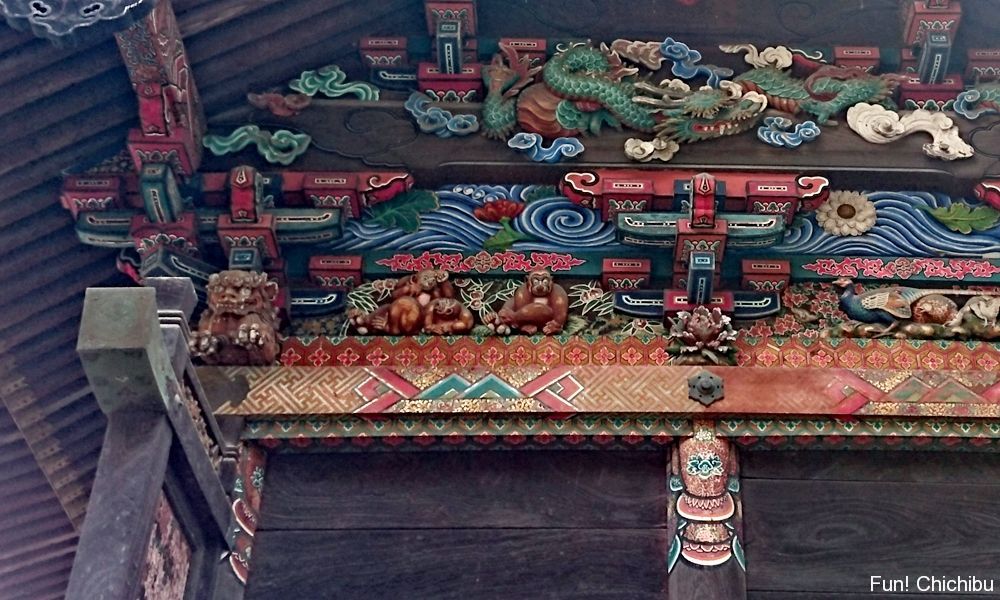
In contrast with the three ‘see no evil, hear no evil, speak no evil’ monkeys of Nikko Toshogu, the three monkeys of Chichibu Shrine are known as cheerful monkeys ‘see well, listen well, speak well.’ They are pictured on charms and the votive picture tablets for health and longevity.
How about sharing the good energy of the cheerful three monkeys by wishing for good health and longevity when purchasing charms or votive picture tablets?
The carving is located on the rear-left side of the Shrine building.
The Owl of North Star
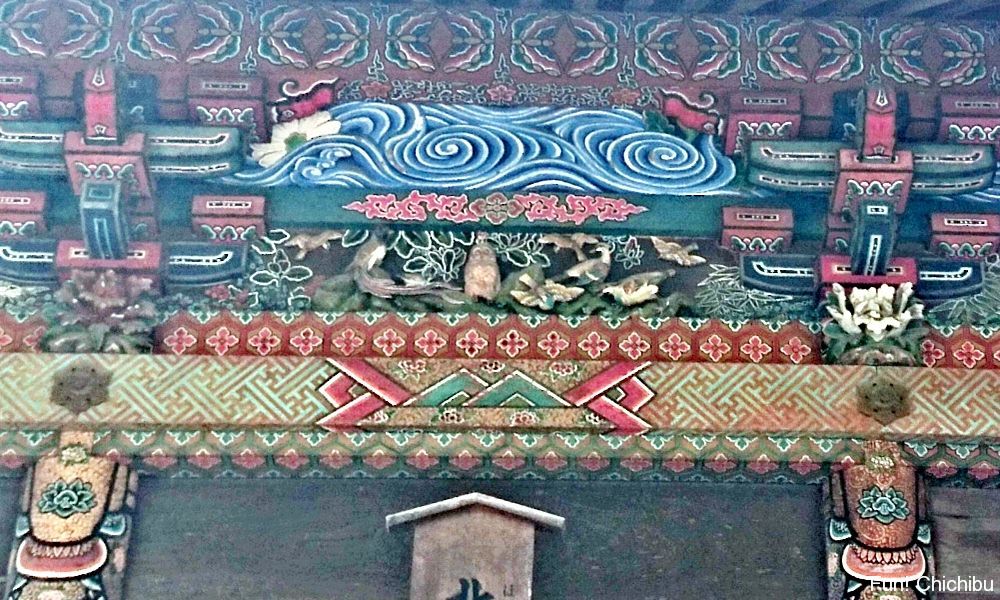
The Owl of North Star is located on the rear (north) side of the Shrine building.
It is small in the above photo but the bird’s body is facing the front (south) of shrine building while its face is looking toward the rear (north) side.
The owl represents wisdom in both Eastern and Western cultures. In Chichibu Shrine there are also owl ornaments with academic achievement spiritual power.
Furthermore, ‘fukuro’, the Japanese name for owls, can also mean ‘no hardships’ therefore the owl is pictured on charms as a symbol of good fortune.
Chained Dragon
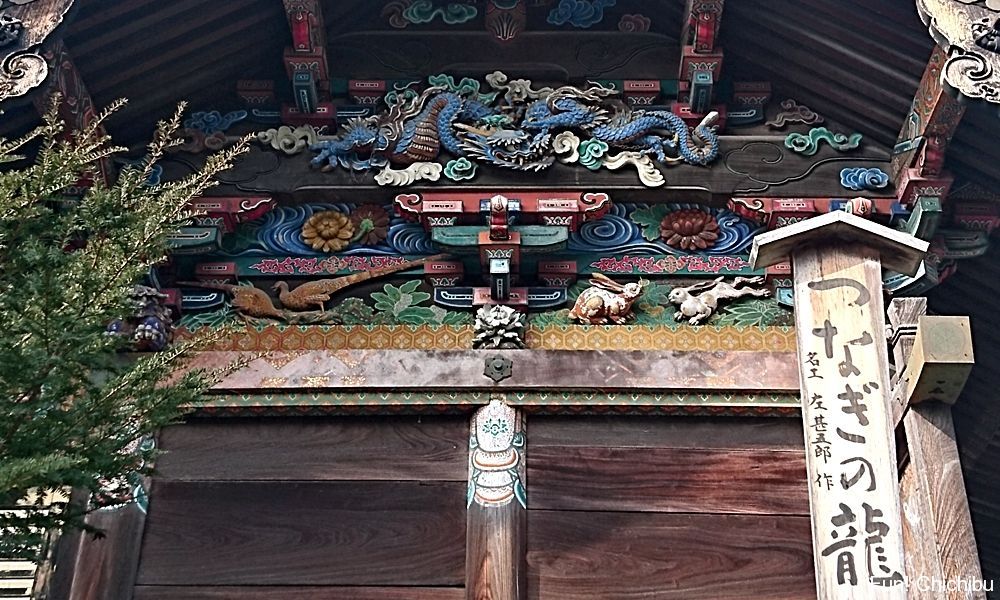
On the right side of the back of the shrine building, there’s a ‘chained dragon’ carving that is also considered Jingoro Hidari’s work.
It is said that it was carved to guard the North-East, which is the unlucky direction of Chichibu Shrine.
When taking a closer look, the dragon can be seen in chains.
According to legend, there were always puddles under the dragon carving when the dragon which settled in nearby Amagaike pond was restless. However, the dragon disappeared from the pond after the dragon carving was chained.
Please see master sculptor Jingoro Hidari’s work, in which the dragon is still chained.
The Main Festivals of Chichibu Shrine (Chichibu Night Festival / Kawase Festival)
Chichibu Shrine has festivals every month except for October. This article will introduce the most famous festivals – the Chichibu Night Festival and the Kawase Festival.
July, the Kawase Festival
In contrast with the Chichibu Night Festival, which is a winter festival held in December, the Kawase Festival is a summer festival. The Chichibu Night Festival in winter is considered as an adults festival whereas the Kawase Festival in summer is for children.
When I was a child, I was very excited and looked forward to these festivals as schools in the Chichibu region will be closed on the days of the Chichibu Night Festival and the Kawase Festival.
The Kawase Festival is held on July 19 and 20 every year.
There are many kasahoko and stalls at the Chichibu Night Festival and Kawase Festival. The Kawase Festival features a Washing Mikoshi Ceremony, where the Mikoshi (portable shrine) is cleaned in the clear water of the Arakawa River.
December, Chichibu Night Festival(Yomatsuri)
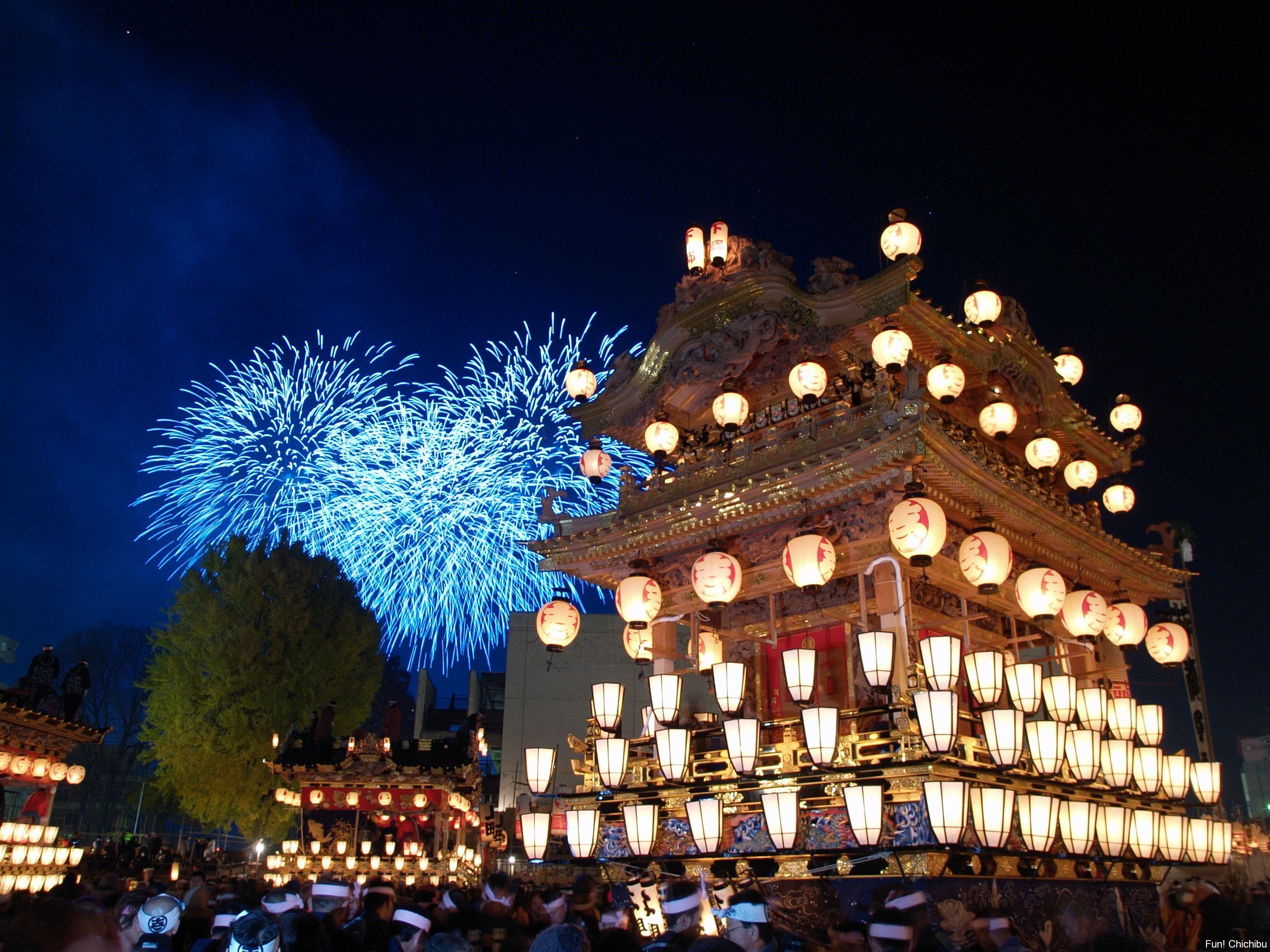
The Chichibu Night Festival is one of Japan’s three major float festivals – it is also registered as intangible cultural heritage by UNESCO.
A traditional festival that has continued for 350 years, the Night Festival is the most important festival of Chichibu Shrine.
Omikuji (Fortunes) and Water Fortunes
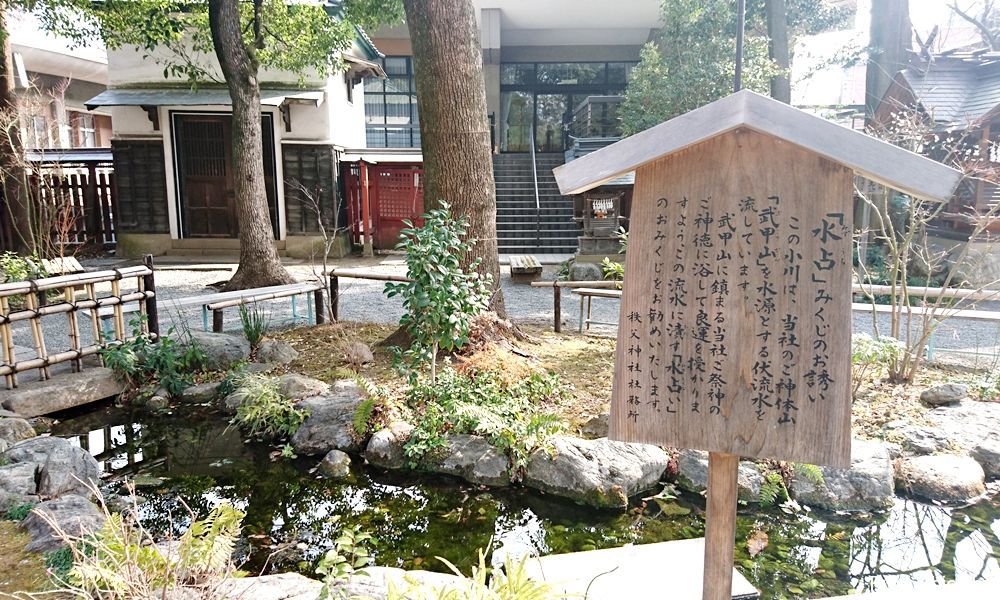
There are the usual Omikuji (fortunes) as well as a water fortunes which use underground water from Mt. Buko.
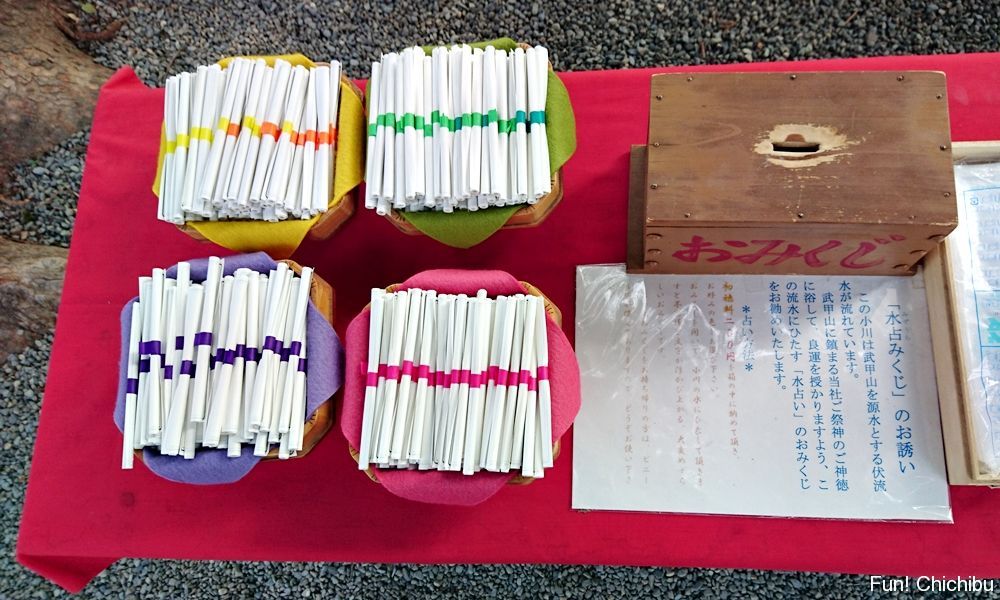
After paying a hatsuho (ceremonial donation) of 200 yen for the omikuji, select one scroll.
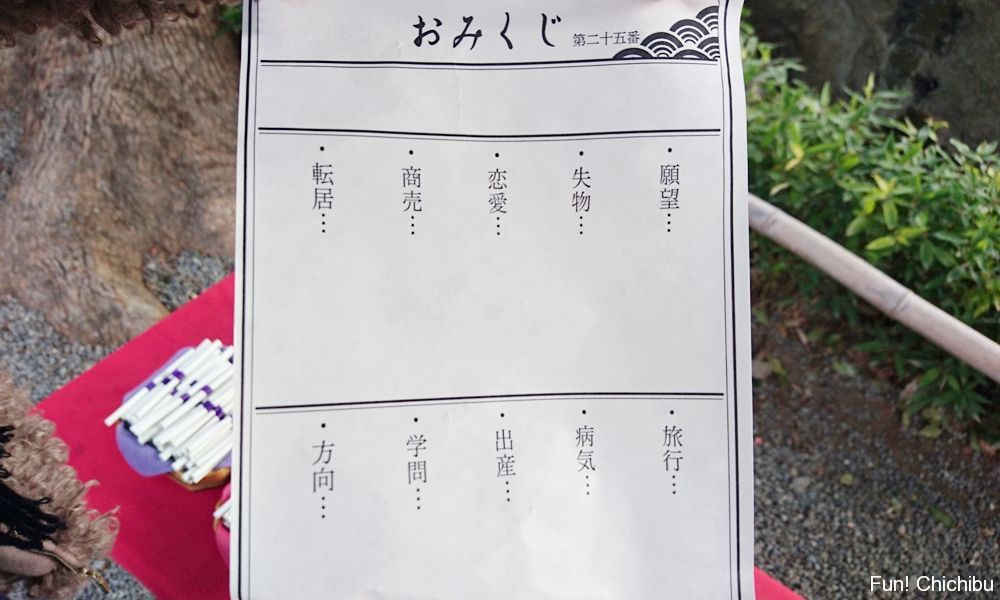
There is nothing written on the fortune. However, when the fortune scroll is placed into the pond inwhich underground water from Mt. Buko flows, this changes.
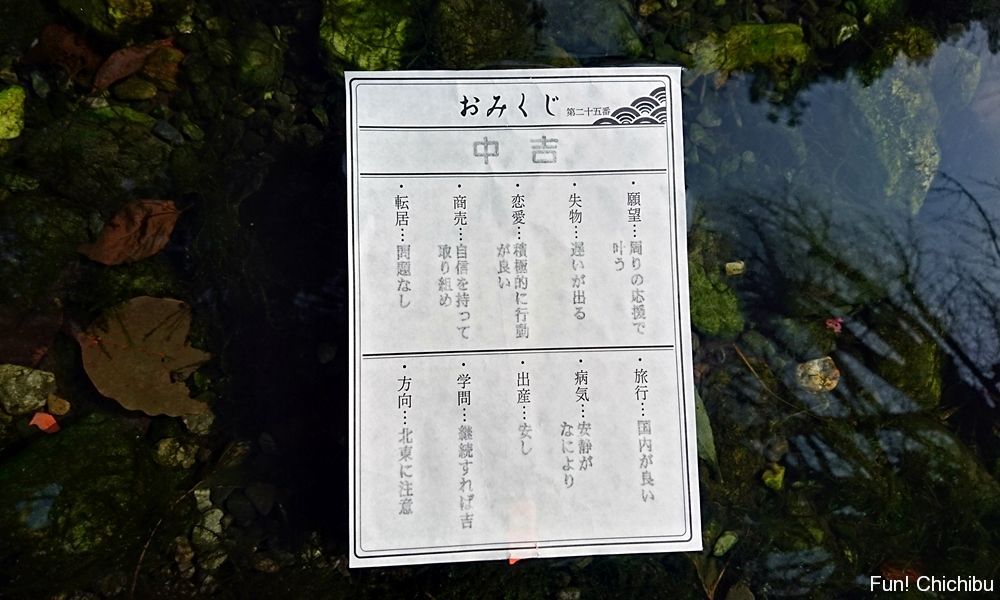
The fortune appears after placing the paper into water. If visitors want to take their fortune home, there are plastic bags available nearby.
Please try the water fortune when visiting Chichibu Shrine.
Access to Chichibu Shrine
Chichibu Shrine
Address : 1-3 Banbamachi, Chichibu City, Saitama Prefecture
The nearest station is Chichibu Station on the Chichibu Railway. After leaving Chichibu station and heading left, it is around 2 minutes walk to Chichibu Shrine. Even with a slow stroll, it takes just about 3 to 4 minutes.
The Shrine is also walkable from Seibu Chichibu Station on the Seibu Railway taking about 15 minutes.
When using the Seibu Line, another way to access the Shrine is taking a Chichibu Railway train from Ohanabatake Station – a 2 to 3 minutes walk from Seibu Chichibu Station.
Although Ohanabatake station is just one stop from Chichibu station, trains run every 30 minutes so it is actually quicker to walk from Seibu Chichibu Station.
Summary

Chichibu Shrine is a historical souchinju (central place to pray for local Shinto gods) in the Chichibu region with over 2000 years of history.
During the Chichibu Night Festival the Shrine is lively that visitors are often overwhelmed with the enthusiasm of the festival. However, Chichibu Shrine is usually a very calm place that visitors forget it is located in the center of a city.
Please visit Chichibu Shrine to feel the power.

